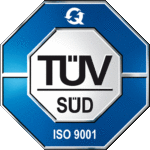The CE marking signifies that a product complies with the essential safety requirements outlined in EU laws. In other words, it indicates that the product has undergone a thorough conformity assessment process prior to being made available on the market. The CE marking should be applied only to products that are subject to specific directives mandating its use.
WHAT IS THE PURPOSE OF CE MARKING PRODUCTS?
Among the common objectives of the states belonging to the European Union is to ensure that goods are free to move within the territory of the EU, as long as they conform to the European provisions concerning the protection of the health and safety of citizens as individuals and workers.
The Essential Health and Safety Requirements (commonly known as EHSRs) are detailed in European directives, serving as guiding principles for manufacturers in the design, production, and introduction of products deemed “safe” into the EU market.
WHAT MUST BE DONE BY THE MANUFACTURER?
The initial step for a manufacturer is to identify the directives and harmonised standards relevant to their product. As mentioned, they could very easily find that they have products belonging to categories falling under the scope of directives requiring CE marking.
Manufacturers of machinery and equipment provide a clear example of this concept: they are subject to the Machinery Directive 2006/42/EC, which mandates them to undergo the self-certification process for CE marking. This entails navigating through the various stages of the Conformity Assessment procedure. It is important to note that the process is self-certification for most machines, but not for those listed in Annex IV of the Machinery Directive, which have a greater risk potential and require a more stringent conformity assessment procedure involving inspection by a notified body.
Some directives, like the Machinery Directive, are known as the “new approach” because they establish safety requirements for a product while granting manufacturers the flexibility to determine how to meet these requirements. In contrast, the “old approach” specified both the essential safety requirements and the methods for compliance.
It therefore remains the full responsibility of the manufacturer to meet and verify the specific requirements of the product in order for it to comply with the directives. It is therefore strongly recommended that the relevant harmonised standards be used and followed in order to obtain a presumption of conformity with the relevant essential safety requirements.
CE MARKINGCERTIFICATION PROCESS
The compulsory CE marking certification process involves several stages, including the drafting of the Compulsory Technical Documentation, which must accompany the machine from its design to its last day of life, and which is made available to the competent national authorities upon request.
More specifically, a Technical File must be opened in which all the documents relating to the machine being assessed are collected, such as:
In addition to applying the CE identification plate to the machine by the manufacturer, the certification process concludes with the manufacturer following the provisions stipulated by the Machinery Directive, which specifies that the plate must be “visible, legible and indelible”, as well as displaying the manufacturer's name.
SUMMARY
- The CE marking does not certify the quality of a product but rather its compliance with health and safety criteria required by EU Directives
- Conformity Assessment is the process of verifying whether or not specific requirements relating to a product have been met
- The process of conformity assessment involves determining whether a product meets specific requirements
- The Technical File is a specific document containing information regarding the machine being assessed during the Conformity Assessment process.
ATTENTION
Even if the CE marking certification process involves self-certification, it must be carried out in a workmanlike manner!
It is possible for the manufacturer to run into various problems following verification by the competent authority, which can include the withdrawal of their product from the market to being involved in more serious situations, such as criminal prosecution.
OTHER TYPES OF CERTIFICATIONS
Certifications are not limited to Europe and CE.
In terms of product safety, the rest of the continents are governed by other more or less recognised certification programmes.
Three important certifications are:
- UL (Underwriters Laboratories ) - This is a mark issued by one of the NRTLs in the United States certifying that a product complies with certain safety standards.
There are a few differences between this and CE certification in that it is not mandatory (as CE) but voluntary, and it is not recognised through a self-certification process but issued by a third party instead. - EAC (EurAseC Conformity) – This is a compulsory certification that ensures the safety of all industrial and consumer products.
As a result, it replaces all regulations of the individual states that make up the customs union (Russia, Belarus, Kazakhstan, Armenia, and Kyrgyzstan). Conceptually very similar to CE marking, but significantly different in the interpretation of the verifications to be carried out. - UKCA (UK Conformity Assessed) – This mark certifies the safety of products placed in Great Britain (England, Scotland and Wales).
It is the exact counterpart of the CE marking and refers to the transposition of directives within the member states. For example, in Great Britain, the Supply of Machinery (Safety) Regulations 2008 regulate the Machinery Directive.
NEED MORE INFORMATION?
Please do not hesitate to contact our staff if you would like more information about these certifications.
OUR METHOD
The method we use is flexible and adaptable according to the needs of your company. In any case, there exists a foundational standard to serve as a starting point:
A flexible process
- Examination of the machinery/equipment/device
- Identification of the relevant directives and the regulatory framework for the specific product
- Organisation of existing documentation within your technical department
- Production of draft documentation
- Consultation regarding the first analysed findings
- Review of the draft (solutions and improvement choices)
- Definition of operating instructions
- Definition of the necessary documentation (Technical File)
YOUR ADVANTAGES
Entrusting us with your product CE Marking Consultancy means you can enjoy the followingadvantages



